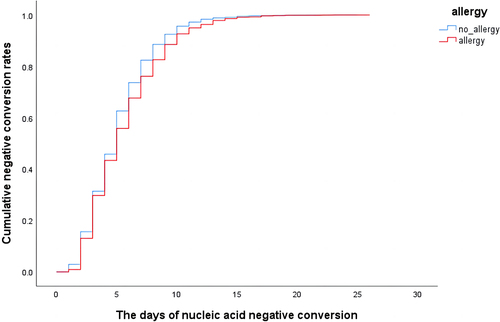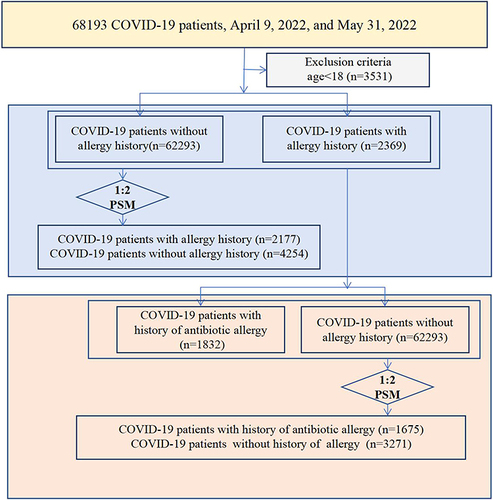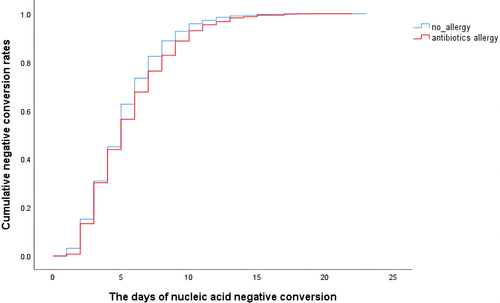Figures & data
Table 1 Baseline Characteristics of COVID-19 Patients with and without Allergy History Before and After PSM Matching
Table 2 Differences in Days to Negative Conversion and Viral Load Between COVID-19 Patients with and without Allergy History
Table 3 Cumulative Negative Conversion Rates of SARS-CoV-2 Between COVID-19 Patients with and without Allergy History
Figure 2 Overall survival analysis performed in the allergy group and non-allergy groups. The Kaplan–Meier method is used to analyze the time to the primary endpoint using a Log rank test.

Table 4 Differences in Days to Negative Conversion and Viral Load Between COVID-19 Patients with and without a History of Antibiotic Allergy
Table 5 Cumulative Negative Conversion Rates of SARS-CoV-2 Between COVID-19 Patients with and without a History of Antibiotic Allergy


